Weather Hype may have you believe the Finger Lakes is in store for another snow storm next week, but the truth is a lot murkier.
Since I began forecasting regularly for the Finger Lakes over 10 year ago, I have learned a lot about the weather and how people interpret forecasts. My Honors Thesis at SUNY Oswego was on the public perception of weather forecasts.
My research and experience has driven me to develop a unique style of weather forecasting. A major component of that is my anti-hype approach to the weather. When a big weather event threatens, it is vital that you, the public, understand the uncertainties so you can prepare for all possible weather scenarios.
That is the difference between doing weather as a service to others…and doing weather for profit.
Winter storms are especially subject to weather hype. This is certainly the case for the storm potential between February 24th and February 26th. Already, still nearly a week in advance, I have been fielding questions about the storm potential for days. I do not fault the public for asking questions, but I question those planting the seeds of hype.
Let’s examine why predicting specific details of any sort are nothing but hype at this point in time, and then I will break down how I typically address a storm threat.
Weather Hype
Meteorologists use computer simulations of the weather- we call them models- to get an idea of what the weather will do. Models can simulate the weather anywhere from minutes in advance to entire seasons and years. There are a wide variety of models, but time and time again, the European model outperforms the rest. For that reason, I am going to focus solely on that model for this analysis. Remember, this is the best model we have.
There are a couple of different methods that can be used with the European, and some other models. The deterministic model run is the primary version of the model. There is also an “ensemble suit“, which is a range of 51 simulations run under slightly different conditions. The ensembles give an idea of the range of possibilities over the course of the simulation. This is especially useful when looking at a storm that is still a week away.

The pie chart in the graphic at the top of the page, and reposted to the right here, shows the distribution of the European ensemble members from the model’s simulation that was run at 7pm, Friday February, 19th. The simulation I looked at was total snow accumulation in Ithaca through 7pm, Friday, February 26th. This range captures a range of possible snow events next week.
It is important to note that I am forbidden by copyright law to show you any of the model graphics, so I had to reorganize the data into my own format.
The biggest slice of the pie chart belongs to the 2 inch to 6 inch range of snow. For some ensemble members, this 2-6″ snow comes in multiple parts over the week. In all, 43% of the ensemble members indicate that next week will be snowy, but certainly not anything the Finger Lakes isn’t used to in February.
The next biggest slice belongs to the over 6 inch group. This 33% is the part of the picture that the hype enthusiasts lock into, ignoring the other 67% that does not show a big storm for the Finger Lakes.
Lastly, coming in at 24%, is the under 2″ slice. Many of these simulations, when looking closer, still bring a storm into the area, but track it to the west and bring rain to the Finger Lakes.
So how do we interpret that data? Like this: there is potential for a significant storm in the Finger Lakes, but it is very uncertain and is not even the most likely scenario at this time.

So where else can we see this uncertainty? Even the deterministic (aka primary version) of the European model makes it clear there is a lot of uncertainty. Let’s look at the ideas the deterministic European has shown over its last few simulations.
In the image to the right, the last 4 simulations are labeled 1-4. Simulation 1, from the Thursday morning, shows low pressure well off the east coast with no impact on the Finger Lakes. Simulations 2 and 3, from Thursday evening and Friday morning, show a storm track right along the coast and into the New England, resulting in significant snow for at least the eastern parts of the Finger Lakes. Simulation 4, from Friday evening, has the low over Buffalo with rain for the Finger Lakes.
What the image doesn’t show is that these four simulations also show difference in the timing, strength and even number of storms next week.
This shows me that the European has some major issues it needs to work out. It has shown no consistency in the evolution of the weather next week, and its details cannot be trusted beyond “there is going to be some active weather in the Northeast next week.” Remember- this is the best model we have, and it is all over the place.
No-Hype Forecasting
Winter storms are one of a few weather systems that can have such a widespread, long lasting impact on people’s lives. It is important to get the best information out to the public as quickly as possible. However, it is crucial that meteorologists are crystal clear about the uncertainties leading up to a situation, and that they rely on the science of meteorology, not a single run of a single weather model, to forecast.
Finding the balance between honest forecasting and hype is delicate. One can be so afraid of hype that they fail to properly inform the public when the weather does threaten. Following is how I tend to look at the weather. This is what I am comfortable with, and I find that my followers appreciate my approach. Is it perfect? Probably not. But I prefer it vastly over the sensationalized hype that spreads like wildfire on social media.
Over 5 Days Away
When the models start to show a strong storm that is over 5 days away, I don’t tend to say much about it. If it continually shows up, model run after model run, I’ll mention its potential and start to carefully track the run-to-run differences in the deterministic and ensemble versions of the model. This is not the time for details or sensationalized headlines. Typically, my analysis at this point is limited to 1 or 2 sentences.
3-5 Days Away
By this time, there is a pretty good idea whether or not some sort of weather event will happen. This is a key time, as the parent weather pattern that will spawn the storm typically moves onshore from the Pacific Ocean. Once over North America, the storm can be observed with significantly more data. All of this observational data is fed into the weather models, and they usually become more reliable as a result.
1-3 Days Away
By now, the details on the storm should be coming together. There still may be large differences between different weather models, and even individual runs of the same model. This is where the science of meteorology and forecasting experience become key to sort through the different projections and make an accurate forecast.
0-36 Hours Before Storm
This overlaps the previous time slot slightly. Once I sort through the data and decide on an idea, it is time to start really driving home the forecast to the public and what potential impacts there may be. The primary objective of the forecasting during this point is to help people prepare so they can stay safe. I often answer many questions during this time period to help people have the best, local, specific information they need.
During the Storm
As the storm moves in and evolves, it is time to look at how the storm is behaving against what was forecast. Updating the public of where the storm is and what is still to come is important. If there are any significant changes that need to be made, this is the time to communicate them.
After the Storm
This is a very important step, too. After the storm is done, forecasters need to go back and compare what happened to what was forecast. I like to take a map of the snow that fell and overlay it with my snow map to see the differences. Even if I don’t post the results publicly, I still do this. Then, I can figure out what went right, or, more importantly, what went wrong. The learning that takes place after a storm is crucial and will help when the next even threatens.
Final Thoughts
This essay is honestly only a snap shot of the work and process that goes into forecasting. I am passionate about my forecasting style and feel very strongly about fighting unnecessary weather hype.
Every storm is different and should be approached by keeping the science of weather forecasting in mind. Sometimes, a storm may become a sure thing sooner, and more warning can be given to the public. Other times, it may not be clear what the storm will do until it is in progress.
There is no cookie-cutter method to weather forecasting. That is why the communication of weather forecasts are as important as the forecast themselves.


Jason
I agree with 100%…
I am some what of a forecaster..I have such disdain for the weather media , I can’t begin to tell you..
I can go on for hours about how I hate The Weather Channel..How dare they name winter storms..
Anther pet peeve of mine is the inaccurate snow measurements that are reported..I can’t tell you how many people just eye ball or measure a drift..
keep up the good work
Linda
This explanation is yet another reason I consider you to be the most honest and reasonable meteorologist in the region. Thank you for the details of your thought process and for not hyping the weather n
Kim Reisch
Thanks so much for this informative article! This is why I get my “real” weather forecast from you!